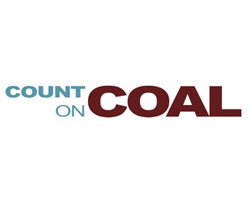September 15, 2023 - Just last week, the Texas grid narrowly avoided blackouts as the state’s grid operator, ERCOT, instituted emergency operating conditions. It was the latest sign that as power demand soars, operators are walking a tightrope to manage grids ever-more dependent on variable sources of power, policy-constrained supplies of thermal generation and inadequate infrastructure.
As
E&E News observed, “a combination of a growing population, a booming economy and a heat wave pushed demand on the state’s main electric grid to previously unseen levels this summer, including 10 all-time records for demand.” Demand, in fact, hit a new record of 85,464 MW in August, a 7% increase over last year’s record. And alarmingly, well above the peak ERCOT predicted earlier this year of 82,739 MW.
What is happening in Texas – soaring demand colliding with increasingly complex operating conditions – is hardly unique to the Lone Star state. It’s a situation beginning to play out nearly everywhere as reliable, traditional generation is rapidly pushed off the grid.
Woody Rickerson, ERCOT’s chief operating officer, said “our grid is not the grid we’ve had in the past,” adding that resources like wind and solar “don’t behave in the same ways” as traditional gas and coal plants. Rickerson said ERCOT is still learning how to manage the variability of renewable generation.
The learning curve is brutally steep, and despite the claims of renewable boosters or academic modelers that would have you believe we can go all renewable overnight, making the system work – and even managing the current pace of change – is proving extraordinarily difficult.
The grid operators – as well as the nation’s reliability regulators – have warned again and again that the pace of the transition is of deep concern, particularly the rate at which we’re losing traditional sources of power.
Jim Robb, the President and CEO of the North American Electric Reliability Corporation, testified to Congress earlier this year that, “we must manage the pace of the transformation in an orderly way, which is currently not happening.” In the same hearing, Manu Asthana, President & CEO of PJM Interconnection, the operator of the nation’s largest grid serving 65 million Americans, said “we will need to slow down the retirement or restriction of existing generation until replacement capacity is deployed… frankly, we see this as the single largest risk in the energy transition.” Once flush with a healthy reserve margin, PJM expects to be short of power during peak operating conditions by the close of the decade.
But despite the on-the-ground reality and the crescendo of warnings from those tasked with keeping the lights on, the Biden administration is keeping its foot on the pedal with its blitz of rulemakings to close essential coal and natural gas plants. This irresponsible stubbornness even comes as
evidence mounts that the renewable energy and transmission buildout the administration is counting on to fill the gaps its creating can’t keep up.
Congress, for its part, is not sitting idly by as the administration takes a jackhammer to the nation’s grid reliability. New legislation in the House, the ‘‘Guaranteeing Reliable Infrastructure Development Act,’’ or the “GRID Act,” would ensure that federal agencies cannot finalize regulations that are likely to have a significant negative impact on the reliability and adequacy of the bulk-power system without considering and responding to input from the Federal Energy Regulatory Commission and the other relevant electricity reliability organizations.
If the Biden administration is unwilling to seriously grapple with the danger its regulatory agenda and blitz of rulemakings pose to the grid, there must be a check to that kind of wildly irresponsible decision making. The GRID Act is exactly what we need to ensure reliability experts – not the renewable energy cheerleaders – have a final say over the resource adequacy and grid reliability we can’t do without.



















































